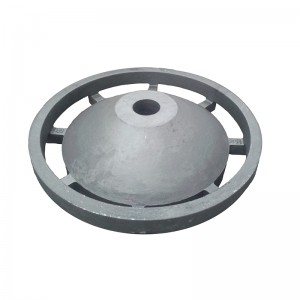- Afrikaans
- Albanian
- Amharic
- Arabic
- Armenian
- Azerbaijani
- Basque
- Belarusian
- Bengali
- Bosnian
- Bulgarian
- Catalan
- Cebuano
- China
- China (Taiwan)
- Corsican
- Croatian
- Czech
- Danish
- Dutch
- English
- Esperanto
- Estonian
- Finnish
- French
- Frisian
- Galician
- Georgian
- German
- Greek
- Gujarati
- Haitian Creole
- hausa
- hawaiian
- Hebrew
- Hindi
- Miao
- Hungarian
- Icelandic
- igbo
- Indonesian
- irish
- Italian
- Japanese
- Javanese
- Kannada
- kazakh
- Khmer
- Rwandese
- Korean
- Kurdish
- Kyrgyz
- Lao
- Latin
- Latvian
- Lithuanian
- Luxembourgish
- Macedonian
- Malgashi
- Malay
- Malayalam
- Maltese
- Maori
- Marathi
- Mongolian
- Myanmar
- Nepali
- Norwegian
- Norwegian
- Occitan
- Pashto
- Persian
- Polish
- Portuguese
- Punjabi
- Romanian
- Russian
- Samoan
- Scottish Gaelic
- Serbian
- Sesotho
- Shona
- Sindhi
- Sinhala
- Slovak
- Slovenian
- Somali
- Spanish
- Sundanese
- Swahili
- Swedish
- Tagalog
- Tajik
- Tamil
- Tatar
- Telugu
- Thai
- Turkish
- Turkmen
- Ukrainian
- Urdu
- Uighur
- Uzbek
- Vietnamese
- Welsh
- Bantu
- Yiddish
- Yoruba
- Zulu
Nov . 16, 2024 05:44 Back to list
Efficient Heat Transfer Solutions with Gas Heat Exchangers for Improved Energy Management
Gas Heat Exchanger An Essential Component in Energy Efficiency
In the quest for enhancing energy efficiency and reducing operational costs, gas heat exchangers have emerged as a critical component in various industrial applications. These devices play a vital role in transferring heat between two or more fluids, facilitating the recovery of waste heat and optimizing thermal performance.
At its core, a gas heat exchanger operates on the principle of heat transfer. It allows hot gas to transfer heat to a cooler fluid, typically air or another gas, without mixing the two. This process is essential in applications ranging from power generation to natural gas processing and even in residential heating systems. The ability to harness waste heat not only improves energy efficiency but also contributes to reducing greenhouse gas emissions.
One of the most significant advantages of gas heat exchangers is their capacity to recover heat from exhaust gases. In power plants, for example, the flue gases emitted during combustion possess substantial thermal energy. By utilizing a gas heat exchanger, this energy can be captured and redirected to preheat the incoming air or fuel, thus decreasing the overall energy demand of the system. This not only leads to lower fuel consumption but also extends the life of equipment by allowing it to operate at reduced temperatures.
gas heat exchanger

Moreover, gas heat exchangers are integral to processes in the chemical and petrochemical industries. They facilitate the efficient transfer of heat during various stages of production, ensuring optimal reaction conditions while minimizing energy waste. In refineries, gas heat exchangers are utilized to recover heat from reactor effluents, which can then be reused within the system, thus enhancing overall efficiency.
The design of gas heat exchangers is critical in maximizing performance. Factors such as surface area, flow arrangement, and the materials used can significantly influence their efficiency. Common designs include counterflow, parallel flow, and crossflow configurations. Each design has its advantages and is selected based on specific application requirements. Additionally, the use of advanced materials and manufacturing techniques has led to the development of more compact and efficient heat exchangers that can perform under extreme conditions.
In recent years, the evolution of technology has further pushed the boundaries of gas heat exchanger performance. Innovations, such as enhanced heat transfer surfaces and improved thermal insulation, have enabled more compact designs that occupy less space while delivering superior performance. Furthermore, real-time monitoring and control systems have become prevalent, allowing for better performance tracking and maintenance scheduling, ultimately extending the lifespan of the equipment.
In summary, gas heat exchangers are indispensable in many industries, driving energy efficiency and sustainability. By effectively capturing and reusing heat, these devices not only lower operational costs but also minimize environmental impact. As industries continue to prioritize energy efficiency, the importance of gas heat exchangers will undoubtedly grow, paving the way for greener and more sustainable practices in the years to come.
-
Premium Cast Iron Water Main Pipe: Durable, Corrosion-Resistant
NewsAug.03,2025
-
Durable Cast Iron Water Mains | AI-Optimized Systems
NewsAug.02,2025
-
High-Efficiency Propane Boiler for Baseboard Heat | Save Energy
NewsAug.01,2025
-
Premium Source Suppliers for Various Gray Iron Castings
NewsJul.31,2025
-
Durable Cast Iron Water Main Pipes | Long-Lasting
NewsJul.31,2025
-
High-Quality Cast Iron Water Main Pipe for Durable Infrastructure
NewsJul.30,2025


